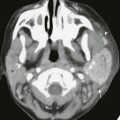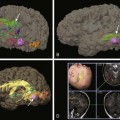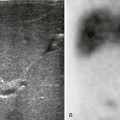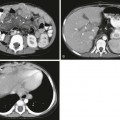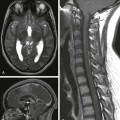Chapter 2 Scant data are available regarding the incidence of contrast reactions in children for at least three reasons: (1) few clinical trials with children as subjects have been performed to obtain federal approval of an agent,1 (2) assessing symptoms, particularly mild ones in very young children, is difficult, and (3) differentiating true contrast reactions from symptoms is difficult because of sedation, synchronous medications, anxiety, and other preexisting diseases.2 In the pediatric population, use of nonionic contrast media is discriminative and exclusive when administered intravenously.3 Administration of nonionic contrast is associated with a much lower incidence of contrast media–related adverse effects.2 Dillman et al4 reported a 0.18% incidence of acute allergic-like reactions to intravenous (IV) administration of nonionic iodinated contrast material in children. This finding is very similar to an incidence of 0.23% in the adult population reported by Cochran et al.5 Most of the contrast reactions are mild in both children4 and adults.2,5–7 Of all the reported allergic reactions in children, 15% (<0.03% overall) were severe in degree.4 Fatal reactions to contrast media have occurred, but they are very rare. A large Japanese study did not blame any fatalities on contrast media in more than 170,000 injections.6 The very low or negligible reported fatalities likely suggest aggressive preventive measures and advancement in management of these reactions.2 Delayed reactions have been described in adults and may occur between 1 hour and 2 days after contrast administration. These reactions are predominantly cutaneous and usually resolve within 7 days.8–10 1. Known prior reaction to contrast media, which markedly increases the risk of subsequent reactions.6,11–13 2. Known allergies to food products or medications; minor allergies do not pose a significant risk, but a prior anaphylactic reaction to any substance should heighten awareness of the possibility of a similar reaction to contrast media administration. 3. A history of asthma may increase the incidence of contrast reaction.6,13 4. Known renal disease; renal function in such patients can worsen after administration of contrast media. 5. Known heart disease, sickle cell disease, or diabetes mellitus; patients with these diseases may be at increased risk for contrast reactions. Other disease entities, such as pheochromocytoma, dehydration, heart failure, severe hyperthyroidism, and β-blocker therapy, that are known risk factors in adults have not been studied in the pediatric population (Box 2-1). The exact pathogenesis of untoward events after the administration of contrast media remains obscure and poorly understood. Most of the symptoms resemble an allergic or anaphylactoid reaction to a medication or allergen. However, definitive evidence is lacking that these reactions are truly allergic reactions because antibodies and the typical allergic cascade to these agents have not been identified.13 Based on severity, contrast reactions can be classified as mild, moderate, or severe. Flushing and a sensation of warmth are considered physiologic responses (Box 2-2). In the event of any adverse reaction to contrast media, the IV contrast injection should be discontinued. All reactions and management of the reactions should be documented in the patient care notes, and notation of a contrast allergy should become part of the patient’s permanent medical record. The following protocols closely follow the American College of Radiology (ACR) guidelines for management of acute reactions in children.2 The specific agents used in the management of an adverse reaction are determined by individual institutional pharmacy formulary and policy. Some institutions require the radiology personnel to call for assistance (e.g., a rapid response team) if they administer IV epinephrine for the management of these adverse reactions (given the rare incidence of these events and hence the lack of uniformity in preparedness for these reactions).14,15 To be prepared for such reactions, weight-based dosages of the medications used for management should be posted in clearly visible areas where contrast media are administered to children. Regular review of treatment protocols and practice of contrast reaction scenarios should be performed by radiologists and staff. If at any time a patient does not respond to treatment or the situation seems troublesome, it is appropriate to seek additional medical support immediately. This support may be sought from another radiologist in the department or through activation of an institutional rapid response or code team. • Red raised wheals that blanch with pressure • Patchy, symmetric involvement • Itching, which is often intense Mild urticaria is usually self-limiting and does not require treatment. Patients may present with pallor, a decreased level of consciousness, diaphoresis, and a decreased heart rate. Management should be initiated with Trendelenburg positioning, securing of the airway, hydration, and administration of atropine if bradycardia persists (Box 2-3).
Complications of Contrast Media
Allergic-Like Reactions
Incidence
Risk Factors
Pathogenesis
Classification of Allergic-Like Contrast Reactions
Management
Urticaria
Hypotension with Bradycardia (Vasovagal Reaction)

